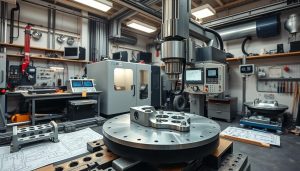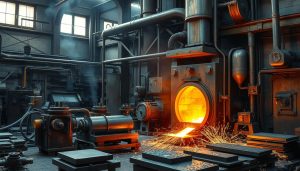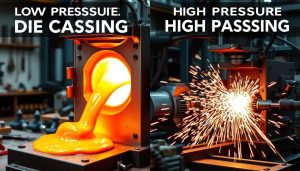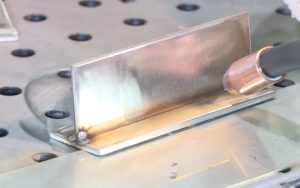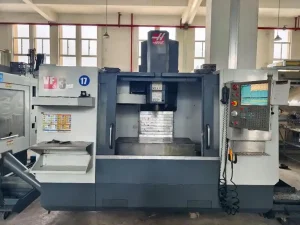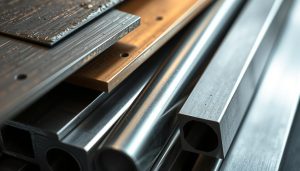In the realm of manufacturing and metalworking, sheet metal bending holds a crucial role, allowing for the creation of intricate shapes and precise bends that are essential for a wide range of industries. From automotive parts to architectural components, the art of sheet metal bending requires a deep understanding of the techniques, tools, and best practices to ensure the successful execution of any project.
This article delves into the world of sheet metal bending, exploring the fundamental processes, the common materials used, and the various methods employed to achieve the desired results. Whether you’re a seasoned metalworker or an aspiring DIY enthusiast, this comprehensive guide will provide you with the knowledge and insights necessary to tackle your next sheet metal bending endeavor with confidence.
What is Sheet Metal Bending?
Sheet metal bending is a fundamental manufacturing process that involves the controlled deformation of flat metal sheets into desired shapes and configurations. This versatile technique is widely used across various industries, from automotive and aerospace to construction and consumer goods. By understanding the intricacies of the sheet metal bending process, manufacturers can unlock new possibilities in design, functionality, and production efficiency.
Understanding the Bending Process
The sheet metal bending process involves the application of force to a metal sheet, causing it to fold or curve along a specific line or axis. This is typically achieved using a press brake, which utilizes a die and a punch to apply pressure and create the desired bend. The degree of bend, the radius, and the precise placement of the fold are all critical factors that must be carefully considered to ensure the final product meets the required specifications.
Common Materials Used in Sheet Metal Bending
While sheet metal bending can be applied to a wide range of materials, some of the most commonly used include aluminum, steel, and stainless steel. Each material has its own unique properties, such as strength, ductility, and corrosion resistance, which can influence the bending process and the final product’s performance. Choosing the right materials for sheet metal bending is essential for achieving the desired results.
When to Use Sheet Metal Bending in Manufacturing
Sheet metal bending is a versatile manufacturing process that can be employed in a variety of applications. From the production of automotive parts and components to the fabrication of HVAC ducts and architectural features, this technique is a valuable tool for creating complex shapes and forms. Its ability to transform flat sheets into three-dimensional structures makes it an indispensable part of many manufacturing applications.
| Material | Advantages | Disadvantages |
|---|---|---|
| Aluminum | Lightweight, corrosion-resistant, easy to bend | Lower strength compared to steel |
| Steel | High strength, durable, cost-effective | Heavier than aluminum, can be more difficult to bend |
| Stainless Steel | Corrosion-resistant, hygienic, can be bent into complex shapes | Higher cost compared to regular steel |
“Sheet metal bending is a fundamental manufacturing process that allows us to transform flat materials into complex, three-dimensional structures, opening up a world of design possibilities.”
Key Methods of Sheet Metal Bending
When it comes to sheet metal bending, there are several key techniques that manufacturers and fabricators rely on to achieve the desired shapes and forms. From air bending to bottoming and coining, each method offers unique advantages and is suited for specific applications. Let’s dive into the details of these essential sheet metal bending techniques.
Air Bending: Pros and Cons
Air bending is a popular sheet metal bending technique that involves using a punch and die to bend the material without fully closing the gap between them. This method is known for its versatility, as it allows for a wide range of bend angles and can accommodate various material thicknesses. The primary benefits of air bending include reduced tooling costs, the ability to make multiple bends in a single setup, and the possibility of making adjustments to the bend angle during the process. However, air bending may not achieve the same level of precision and accuracy as other techniques, and the risk of springback can be higher.
Bottoming: Precision and Accuracy
Bottoming, on the other hand, is a sheet metal bending method that fully closes the gap between the punch and die, resulting in a tight, precise bend. This technique is particularly well-suited for applications that require tight tolerances and complex geometries. Bottoming is often used in the production of intricate components, as it can create sharper, more defined bends with minimal springback. The trade-off is that bottoming typically requires more specialized tooling and can be more time-consuming than other bending methods.
Coining: For Complex Shapes and Tight Tolerances
For the most demanding sheet metal bending requirements, coining is a specialized technique that uses high-pressure deformation to form complex shapes and achieve exceptionally tight tolerances. In the coining process, the material is forced into the die cavity, resulting in a clearly defined, sharp bend with minimal springback. This method is often employed in the production of intricate parts, such as those found in aerospace, automotive, and high-end electronics applications. While coining offers unparalleled precision, it also requires the most specialized tooling and can be the most time-consuming and costly of the three bending techniques.
By understanding the key characteristics and applications of air bending, bottoming, and coining, manufacturers and fabricators can choose the most suitable sheet metal bending technique for their specific project requirements, ensuring optimal results and efficiency.
| Bending Technique | Advantages | Disadvantages |
|---|---|---|
| Air Bending |
|
|
| Bottoming |
|
|
| Coining |
|
|
By understanding the key characteristics and applications of air bending, bottoming, and coining, manufacturers and fabricators can choose the most suitable sheet metal bending technique for their specific project requirements, ensuring optimal results and efficiency.
Essential Tools for Sheet Metal Bending
When it comes to sheet metal bending, the tools you use can make all the difference. From simple manual bending tools to advanced CNC machines, the range of options available allows fabricators to tackle a wide variety of projects with precision and efficiency.
Manual vs. CNC Machines
For smaller-scale or one-off sheet metal bending tasks, manual tools like hand brakes, bending rolls, and box and pan brakes can be a cost-effective solution. These manual bending tools give skilled workers greater control over the bending process, allowing for intricate shaping and forming. On the other hand, CNC (Computer Numerical Control) machines offer unparalleled accuracy and repeatability, making them ideal for high-volume production or complex bendwork.
The Role of Press Brakes in Sheet Metal Bending
One of the most essential tools in any sheet metal fabrication shop is the press brake. These powerful machines use a combination of a stationary lower die and a movable upper punch to bend sheet metal with precision and control. Press brakes come in a variety of sizes and capacities, allowing fabricators to tackle projects ranging from small components to large, heavy-duty parts.
Using Vices and Other Basic Tools
- Vices: Secure the sheet metal in place during the bending process, providing a stable foundation.
- Hammers and mallets: Help shape and form the metal, especially for manual bending techniques.
- Measuring tools: Ensure accurate measurements and consistent bend angles.
- Lubricants: Reduce friction and wear on the tools and the metal, ensuring smooth bending.
| Tool | Description | Best Used For |
|---|---|---|
| Sheet Metal Bending Tools | Manual tools like hand brakes, bending rolls, and box and pan brakes | Smaller-scale or one-off sheet metal bending tasks |
| CNC Machines | Automated machines with computer control for high accuracy and repeatability | High-volume production or complex bendwork |
| Press Brakes | Powerful machines that use a stationary lower die and movable upper punch to bend sheet metal | Precision bending for a wide range of project sizes |

Regardless of the specific tools used, proper maintenance, operator training, and attention to safety are essential when working with sheet metal bending equipment. By leveraging the right tools and techniques, fabricators can create high-quality, precisely bent components that meet the demands of their clients.
Design Considerations for Sheet Metal Bending
When it comes to sheet metal bending, there are several critical design factors to consider to ensure accurate and consistent results. From calculating bend allowances to selecting the right materials, attention to detail is key for successful sheet metal fabrication.
Calculating Bend Allowances and Springback
One of the most important aspects of sheet metal bending is accurately determining the bend allowance. This refers to the extra material needed to compensate for the metal’s natural tendency to “spring back” after being bent. Factors like material thickness, grain direction, and bend radius all play a role in calculating the appropriate bend allowance. Failing to account for springback can lead to parts that don’t fit together properly or have the desired shape.
Choosing the Right Material for Bending
The choice of sheet metal material is also crucial for bending applications. Factors like ductility, tensile strength, and formability should be considered to ensure the metal can be successfully bent without cracking or deforming. Softer, more malleable materials like aluminum or low-carbon steel are generally preferred for bending, while harder metals like stainless steel may require more specialized techniques and tools.
Factors to Consider for Accurate Bending
- Grain direction: The orientation of the metal’s grain can significantly impact the bend quality. Bending perpendicular to the grain is generally preferred for better results.
- Material thickness: Thinner materials are generally easier to bend, while thicker sheets may require more force and specialized equipment.
- Bend radius: The tightness of the bend radius can affect the stress on the metal and the likelihood of cracking or tearing.
- Tool selection: Choosing the right bending tools, such as press brakes or manual brakes, is crucial for achieving the desired bend quality and consistency.
By carefully considering these design factors, sheet metal fabricators can create parts that meet the required specifications and withstand the demands of their intended applications.

| Design Factor | Consideration | Impact on Bending |
|---|---|---|
| Bend Allowance | Calculating the extra material needed to compensate for springback | Ensures accurate part dimensions and proper fit |
| Material Selection | Choosing the right metal based on ductility, strength, and formability | Enables successful bending without cracking or deformation |
| Grain Direction | Orienting the metal’s grain perpendicular to the bend | Improves bend quality and reduces the risk of cracks or tears |
| Material Thickness | Considering the thickness of the sheet metal | Thinner materials are generally easier to bend, while thicker sheets may require more specialized tools and techniques |
| Bend Radius | Determining the tightness of the bend | Affects the stress on the metal and the likelihood of defects |
| Tool Selection | Choosing the appropriate bending equipment | Ensures consistent, high-quality bends and the ability to meet project requirements |
“Successful sheet metal bending requires a deep understanding of the material’s properties and the various design factors that can impact the final result. By paying close attention to these details, fabricators can create parts that are both functional and visually appealing.”
Why Choose Shixinproto for Your Sheet Metal Bending Needs?
As a leading provider of sheet metal bending services, Shixinproto has established a reputation for delivering exceptional results across a wide range of industries. With decades of experience and a commitment to innovation, our team of skilled professionals is equipped to handle even the most complex metalworking projects with precision and expertise.
Expert Sheet Metal Bending Services for Any Industry
Shixinproto’s sheet metal bending services are tailored to meet the unique needs of our clients, regardless of the industry they operate in. From aerospace and automotive to construction and home appliances, our versatile capabilities ensure that we can provide customized solutions that exceed your expectations.
High Precision and Custom Solutions for Your Project
At Shixinproto, we understand that every project is unique, which is why we take a personalized approach to our work. Our state-of-the-art equipment and advanced manufacturing techniques allow us to achieve high-precision results, while our commitment to innovation ensures that we can deliver custom metalworking solutions that address your specific requirements.
